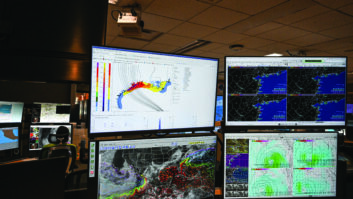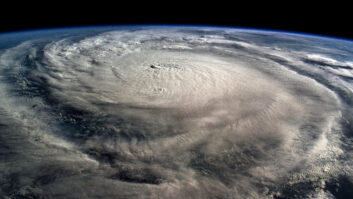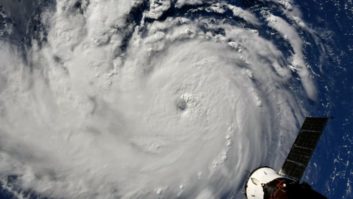The Gulf Coast of Florida is a hot spot for damaging hurricanes. Broadcast engineers know that the time to prepare is not while an eye wall is coming ashore.
The survival of infrastructure from such a direct hit is never assured, but planning, extra legwork and new technologies can go a long way to keep a station on the air or help it return in a more timely fashion.
The damage done by Category 4 Hurricane Ian in September was the subject of a Society of Broadcast Engineers WebXtra webinar. It featured Kevin Trueblood, CBRE, CBNT, associate general manager, technology and operations at WGCU Public Media at Florida Gulf Coast University in Fort Myers, Fla., and Aaron Schultz, IT director and assistant engineer at The Joy FM and its parent the Radio Training Network in Sarasota, Fla.
Trueblood — who can rattle off names of past storms like Matthew, Michael and Irma and recount the damage that each did — says nearly every station in the Fort Myers market was affected by Hurricane Ian. WGCU(FM) lost its primary and backup STL links, Trueblood said, but was able to operate from an auxiliary transmitter site at its main studio.
While Sarasota was spared the worst, some tower sites were affected, Schultz said. WJIS(FM), Joy Radio’s outlet in Venice, Fla., ran its transmitter site on a generator until its propane supply gave out several days after the hurricane. Roads to the station’s tower site had been washed out, Schultz said, so a Nautel VS2.5 transmitter in a travel case, 12 kW gas generator and 55-gallon fuel tank with fuel had to be shuttled there via airboat.
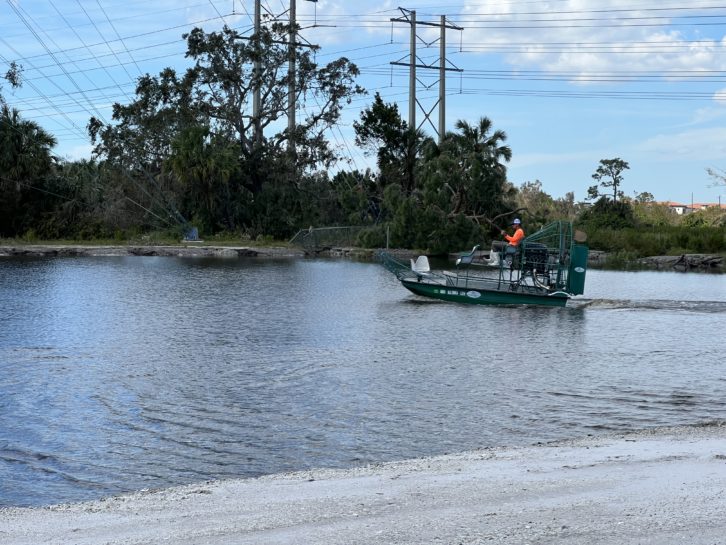
Radio World: What planning seemed to work and what would you do different?
Kevin Trueblood: Before the storm, we cleaned up our sites, topped off generator fuel and tested backups to make sure everything worked. What we could do better is ensuring we have enough people resources after the storm —things like portable showers, port-a-potties, more food and more resources to support a large amount of staff who will be living at your studio for many days during and after the storm.
Aaron Schultz: Our pre-planning begins as we build each transmitter site. Redundancy is a necessary part of our operations. We use internet as our main form of STL almost everywhere, and because of that we install two or three forms of internet at each of our tower sites, typically a mix of fiber, cable, DSL, WISP and LTE, giving us the best chance of being on the air in any situation.
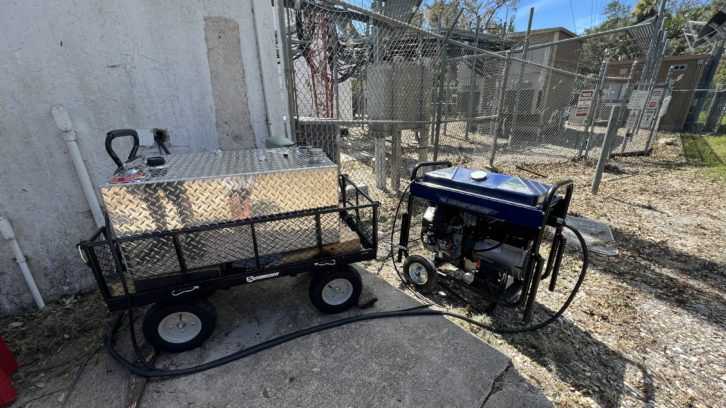
Our yearly pre-hurricane planning usually occurs in early May, where we confirm all of our fuel levels at each of our transmitter sites and schedule fills where needed before the start of Hurricane season on June 1. We are meticulous when it comes to generator maintenance and testing. Each of our generators does a weekly fully loaded exercise and is maintained at least twice per year.
RW: What would you do differently knowing the damage Ian did to broadcast sites?
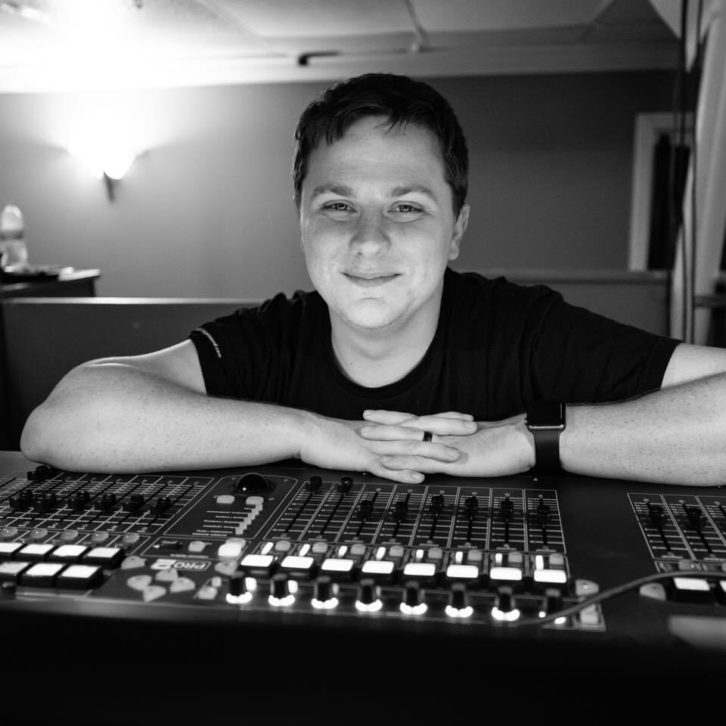
Schultz: Have more fuel at generator sites. We had always planned for 3 to 4 days. After Hurricane Ian we are now planning for at least seven days of fuel at each of our sites, and for a few key sites where accessibility may become an issue, we are discussing expanding to 10 days.
Communication became quite a problem even around town. I live approximately 50 miles from where the storm made landfall, and while we never lost power, we lost internet at home for two days, and cell service was practically unusable for a week.
This storm has caused me personally to expedite my amateur radio test, so we could have a more robust form of communication, instead of a text to colleagues out-of-state saying where we were, where we were going and when we planned to check back in.
RW: What surprised you most about the aftermath and cleanup from the storm?
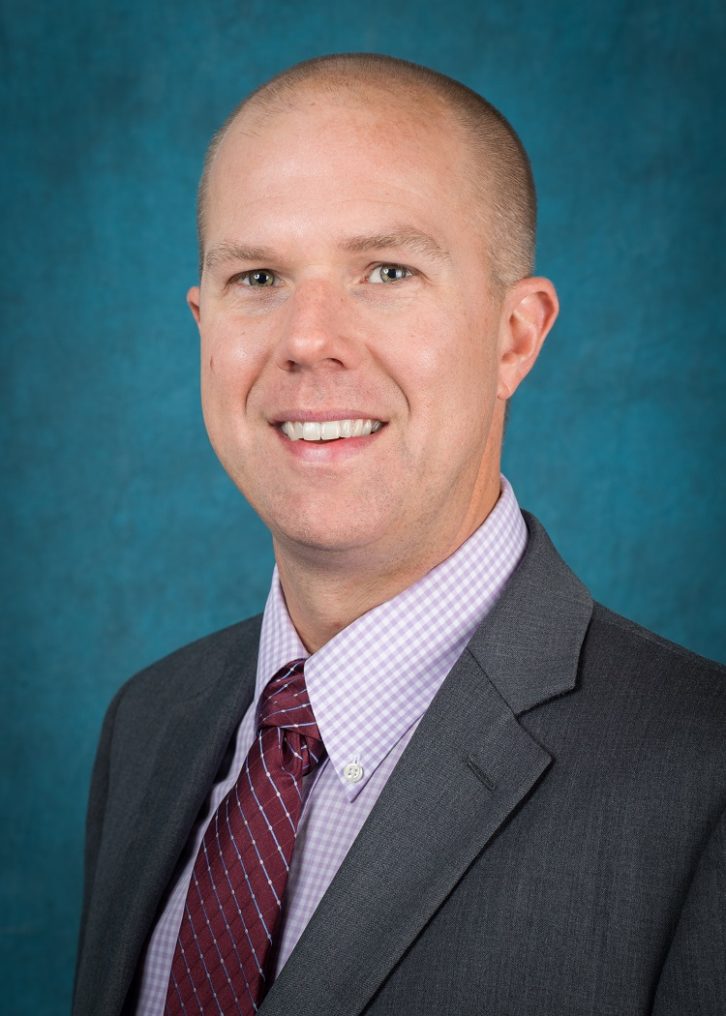
Trueblood: How many resources you’ll lose, but also how quickly things rebounded. In the two days following the storm, 95% of our area was without power and without any water service due to water main breaks. But those things did rebound, and most sites had power and water restored in the following few days.
However, even after power was restored, cell service and internet service did not start reliably working in most areas until about four to five days after the storm.
Schultz: For us it was how fast power came back at most places, and honestly how quickly roads and access were restored once workers arrived. Second, how much the engineering community was willing to help each other. We had broadcast and cellular engineers willing to help in any way possible. We also extended a helping hand to other broadcasters in need, post-storm.
RW: How is the development of new technology helping engineers prepare? Aaron, during the webinar you mentioned a new fuel monitoring system.
Schultz: Security cameras at tower sites can give you so much information about what it’s like at your site during a disaster as well as the added benefit of having a way to monitor who is around the tower site. Fiber internet and redundant internet have helped us immensely.
Monitoring of everything is crucial. We primarily use Burks at our transmitter sites, but we also monitor many aspects of our sites, including the UPS, the generator and the transmitter via SNMP with an open-source program called Zabbix.
For fuel tank monitoring, we use a product called Tank Utility to monitor our fuel consumption and fuel on hand at all of our tower sites. It updates periodically to a centralized web manager.
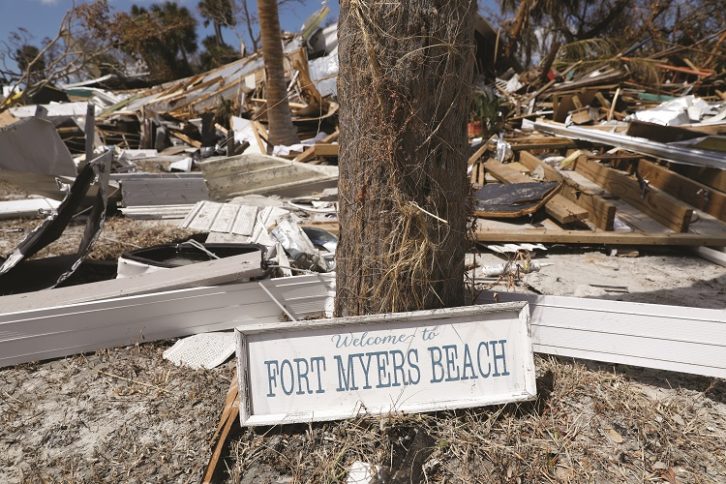
RW: What is one piece of advice to other broadcast engineers when it comes to disaster preparedness?
Schultz: Redundancy, and testing your redundancy. But really you can only be so prepared. At some point during a disaster you just have to sit back and watch, and hope your backup plans all work.
Don’t be afraid to think outside the box. Pool your resources. Maybe an employee has a small flat-bottom boat, an airboat, a tall lifted truck. Know what you have and ask around for what you may need.
Also stock up on fuel, motor oil, oil filters for your generators. You don’t know how long you might be running on your generator, or how soon your generator maintenance company can get to you if you are running for an extended period of time.
We even purchased a diesel fuel transfer tank for our work engineering vehicle. It became invaluable in keeping us on the air and making it possible for us to travel areas to assist where there was no fuel for a few days.
Trueblood: Things will go down. Even your best plans will fail. What will get you through is being resourceful and knowing what you’re capable of doing and who you know that can help.
To that end, make connections with your fellow engineers in the market and other broadcasters, particularly if you have shared sites.
Post-Ian, we were able to pool three separate broadcasters together to coordinate fuel delivery to one inaccessible site. Another broadcaster had an abandoned transmission facility we were able to utilize to get a station on the air whose site was flooded.
RW: Are there other considerations that broadcasters sometimes overlook?
Trueblood: One thing to be very conscious of is the emotional toll it will take on your staff. After a disaster, your staff will be seeing and dealing with the devastation and telling the worst of the stories. That is, of course, in addition to their own personal losses.
In our case, several of our staffers had their homes destroyed or significantly damaged. Be prepared to give your staff a break and bring in additional staffing and resources to make sure everyone is supported so you can continue providing vital information to the public. And along with that, just patience and kindness. Because everyone is dealing with a lot.
You can access the webinar on the SBE YouTube channel.
